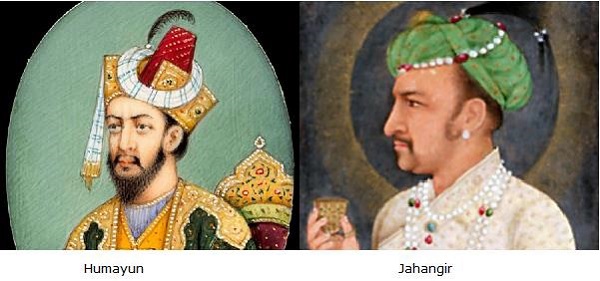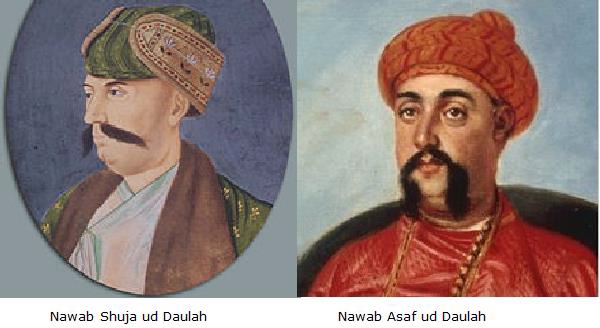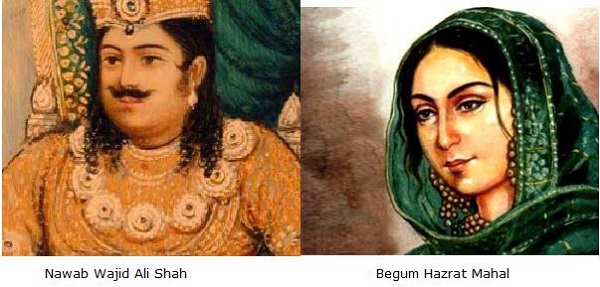Bara Imambara - Overview
Bara Imambara or Asafi Imambara was constructed in 1784 by Nawab Asaf-ud Daulah, the fourth nawab of Awadh. Shia Muslims come here to mourn during the month of Muharram to commemorate the martyrdom of Imam Husain, the grandson of Prophet Muhammad, in the battle of Karbala held in 680AD. The main feature of this monument is that no pillars or beams were used to support the roof.

Lucknow
Lucknow is the capital of Indian state Uttar Pradesh and stands on the banks of Gomti river. Lucknow is popular for its Ganga Jamuni Tahzeeb. The city was the capital of the Nawabs of Awadh during 18th and 19th century. The rulers of many dynasties ruled the city which finally came under the rule of British. After independence, the city was made the capital of Uttar Pradesh.

Visiting Hours
Bara Imambara opens for public from 6:00am to 5:00pm. It takes around one hour to visit the monument as there are few places to visit. The monument is opened on all days of the week except Monday. The monument does not close on public holidays.
Tickets
The visitors have to pay buy tickets in order to visit the monument. Indian visitors have to pay Rs. 25 while foreign tourists have to pay Rs. 300. There is no ticket for the children below the age of 15 years.
Best time to visit
Best time to visit Lucknow is the period between September and March as the weather is pleasant. Though the month of January is chilly but still people will enjoy moving in and around the city. In the rest of the months the climate is either hot or hot and humid and is not suitable to visit the place.
Where to Stay?
There are more than 300 hotels in Lucknow where people can enjoy their stay. The hotels range from inexpensive hotels to five-star hotels. Some of the hotels in the city with their location are as follows −
- Five-Star Hotels
- Lebua Lucknow located at Mall Avenue
- Hotel Clarks Awadh located at MG Road
- Renaissance Lucknow Hotel located at Gomti Nagar
- Vivanta by Taj located at Gomti Nagar
- The Piccadily located at Bara Birwa
- Four-Star Hotels
- Hotel Ranjees located at Gomti Nagar
- The Grand Radiant located at Cantt Road
- The Grand JBR hotel located at Gomti Nagar
- The Revanta located at Sitapur Road
- Hotel Deep Palace located at Cantt Road
- Three-Star Hotels
- Hotel Dayal palace located at Gomti Nagar
- The Maple Leaf Hotel located at Hazratganj
- Hotel York Inn located at Guru Gobind Singh Marg
- Hotel Levana located at Hazratganj
- Hotel Lineage located at Gomti Nagar
- Budget or Two-Star Hotels
- Hotel Sunrise located at Charbagh
- Treebo Shivam Inn located at Gomti Nagar
- Royal Inn located at Saharaganj
- Hotel Simla Palace located at Latouche Road
- Hotel Mangalam Palace located at Airport Road.
- Cheap or One-Star Hotels
- Hotel Ganga Maiya located at Hussainganj
- Hotel S P International located at Latouche Road
- Babian Inn located at Faizabad Road
- Hotel Raj located at Vidhan Sabha Marg
- De Park Inn located at Gomti Nagar
Bara Imambara - History
Lucknow, the capital of Uttar Pradesh, is very popular for its culture and traditions developed here by Nawabs of Awadh. Previously, the city was ruled by Delhi Sultanate, Sharqi Sultanate, and Mughals and then it came under Nawabs and then the British.
Awadh under Sharqi Sultanate and Mughals
The Sharqi Sultanate of Jaunpur ruled Awadh from 1394 to 1478AD. Awadh came under Mughals during the rule of Humayun in 1555. Jahangir gave an estate in Awadh to Sheikh Abdul Rahim and later he turned it into his kingdom.

Awadh under Nawabs
Lucknow became the capital of Shuja-ud-Daulah, third Nawab of Awadh. The life of the Nawabs was extravagant. They loved art and music and also constructed many monuments in the city. The British fought with the third nawab because he gave shelter to Mir Qasim, the Nawab of Bengal. Shuja-ud-Daulah was defeated in the battle of Buxar and has to pay penalty and surrender some territories to the East India Company.

Asaf-ud-Daulah was the fourth nawab who succeeded Nawab Shuja-ud Daulah. In 1775, the nawab shifted his court to Lucknow from Faizabad. In his period, many mosques and other monuments were constructed. Asaf-ud-Daulah was succeeded by Wazir Ali Khan but British forced him to leave the capital. After that Saadat Ali Khan took over the throne with the support of British. In 1801, Saadat Ali Khan was forced to give many parts of the kingdom to the British.
Awadh under British
British East India Company took over the control of Awadh in mid-19thcentury. They imprisoned Wajid Ali Shah and gave the control of Awadh to Sir Henry Lawrence. Wajid Ali Shah was sent to Calcutta after imprisonment. Begum Hazrat Mahal took over Awadh after her husband Wajid Ali Shah was exiled.

In 1857, she participated in the mutiny but after the defeat of the rebels, she and other rebellions went to Nepal. In this mutiny, the rebels besieged Awadh and the British have to struggle for around eighteen months to control the situation and the kingdom again.Lucknow was one of the main base for Khilafat movement. The city later became a part of United Province which included Agra and Awadh. After independence, United Province was renamed as Uttar Pradesh and Lucknow was made its capital.
History of Bara Imambara
Bara Imambara was constructed by Nawab Asaf-ud-Daulah in 1784. In order to employ people during the 11-year famine, the nawab planned to build it. The famine affected the nobles and the common people.
Kifayatullah was the architect and designer of the monument who came from Delhi and designed it. Around 20,000 people were employed to construct the building. Some of them worked during the day while others worked at night. It took eleven years to construct the building and famine was also there for the same period.
Bara Imambara - Architecture
Bara Imambara is a monument where the Shia Muslims come to mourn in the month of Muharram. The monument has two levels of entrances, a large, courtyard, and many gardens. There are two magnificent entrances which are triple arched. The main building is constructed on a high platform and has three storeys.
Central Hall
There are nine halls in the monument and the central hall is the largest. The hall has the length of 50m and width of 16m. The ceiling is constructed at the height of 15m. The main feature of the ceiling is that there are no columns to support it. Also, no beams, iron rods or a girder were used to support the ceiling. The eight other halls are small and surround the central one.

Bhul Bhulaiyya
Bhul Bhulayya is a part of the monument that has a network of walls. Tourists, who go to see it, must take a guide with them in order to enter and exit bhul bhulayya. The bhul bhulayya has 1000 passages and many of them are dead ends.

Baoli and Asafi Masjid
The monument has a five-storey baoli or step well and is also known as Shahi Hammam. The step well is directly connected to Gomti. Out of the five storeys, three are submerged in water while two are above.

Asafi Masjid was constructed inside the bara imambara by Nawab Asaf-ud-Daulah. No iron material was used in the construction of the mosque. The mosque is located to the right of the bara imambara’s gate.
Bara Imambara - How To Reach?
Lucknow is a popular place which can be reached by air, rail, and road transport. Lucknow is connected to all the major cities of India through all the three modes of transport. Lucknow is also connected to some places abroad like Dubai, Jeddah, Bangkok etc. through international flights.

The distance of some of the cities from Lucknow is as follows −
- Lucknow to Allahabad
- By air – 179km
- By rail – 195km
- By road – 201km
- Lucknow to Kanpur
- By air – 77km
- By rail - 195km
- by road - 73km
- Lucknow to Jhansi
- By air – 273km
- By rail – 292km
- By road – 303km
- Lucknow to Delhi
- By air – 417km
- By rail – 500km
- By road – 555km
- Lucknow to Agra
- By air – 296km
- By rail – 328km
- By road – 334km
- Lucknow to Gwalior
- By air – 281km
- By rail – 446km
- By road – 343km
- Lucknow to Faizabad
- By air – 119km
- By rail – 135km
- By road – 128km
- Lucknow to Gorakhpur
- By air – 243km
- By rail – 263km
- By road – 272km
- Lucknow to Varanasi
- By air – 259km
- By rail – 283km
- By road – 274km
By Air
The nearest airport to Lucknow is Chowdhury Charan Singh airport which is located at Amausi, 14km away from the city. National and international flights land here and theairport is the 12th busiest airport of India. Terminal 1 is there for arrival and departure for international flights and terminal 2 is for domestic flights.

By Train
Lucknow is well-connected to almost all parts of India through railways. Lucknow railway station is located at Charbagh from where many trains depart and arrive. Shatabdi, Rajdhani, Double Decker, Gharib Rath, superfast and fast mail and express trains pass through the city. Many trains originate from the station to other cities.

By Road
Lucknow is well-connected to many nearby as well as distant places through road transport. People can catch UPSRTC buses or private buses to go to their destination. The buses go to Kanpur Allahabad, Delhi, Jaipur, and many other places. The bus stand is located opposite to charbagh railway station.

Local Transport
Tourists can use buses, taxis, auto rickshaws and cycle rickshaws to move in and around the city. Local buses can be taken from Alambagh where local bus stand is located. Private taxi providers are there who provide taxis for visiting various places in Lucknow. Auto and cycle-rickshaws are also very common.
Bara Imambara - Nearby Places
Lucknow is a popular city where there are many historical monuments and amusement parks. Lucknow is especially popular for the rule of Nawabs who built many monuments, mosques, gardens and others in the city. Some of these monuments are as follows −
Rumi Darwaza
Rumi Darwaza was built by Nawab Asaf-ud-Daulah in 1784 on the basis of Awadhi architecture. Rumi Darwaza is also known as Turkish Gate as per the resources from the British.

Historians say that the structure is the replica of a gate in Constantinoplecurrently known as Istanbul. The height of the structure is 60 feet and Bara imambara is just 0.3km away from Rumi Darwaza. The British entered Lucknow through this gate in 1858 after the mutiny of 1857.
Chota Imambara
Chota Imambara is also known as Imambara Hussainabad Mubarak. Mohammad Ali Shah, the third nawab of Awadh, built the imambara. Here Shia Muslims perform mourning ceremonies in the month of Muharram.

This imambara is also a mausoleum of the third nawab and his mother. There are five doors to enter the imambara. Along with it, there are two halls and a platform called Shehnasheen.
British Residency
British Residency is a complex where several buildings exist. The building was constructed during the reign of Nawab Saadat Ali Khan who was the fifth Nawab of Awadh. The construction took place between 1780 and 1800AD.

British resident general resided here as he was the representative of the Nawab’s court. Siege of Lucknow began from this building which ended after 18 months.
Aurangzeb’s Mosque
Aurangzeb’s Mosque is situated near Bara Imambara and is built on the basis of Indo- Muslim architecture. The mosque can be visited by people of any community as they get historical information from here.

Chandrika Devi Temple
Chandrika Devi temple is dedicated to the Hindu Goddess Chandi. The temple was built on the banks of Gomti and is located on Lucknow Sitapur road. The temple is around 28km away from Lucknow. There are several legends regarding the construction of the temple.

Some say that it was constructed by the son of Lakshman, brother of Lord Rama. Another legend says that it was constructed by Barbreek, grandson of Lord Krishna. Religious activities take place during Amavasya and Navratra.

Taking a Lucknow to Mumbai flight is a great way to explore the cultural and commercial hub of India. With numerous flights and airlines to choose from, travel has never been easier.
ReplyDelete